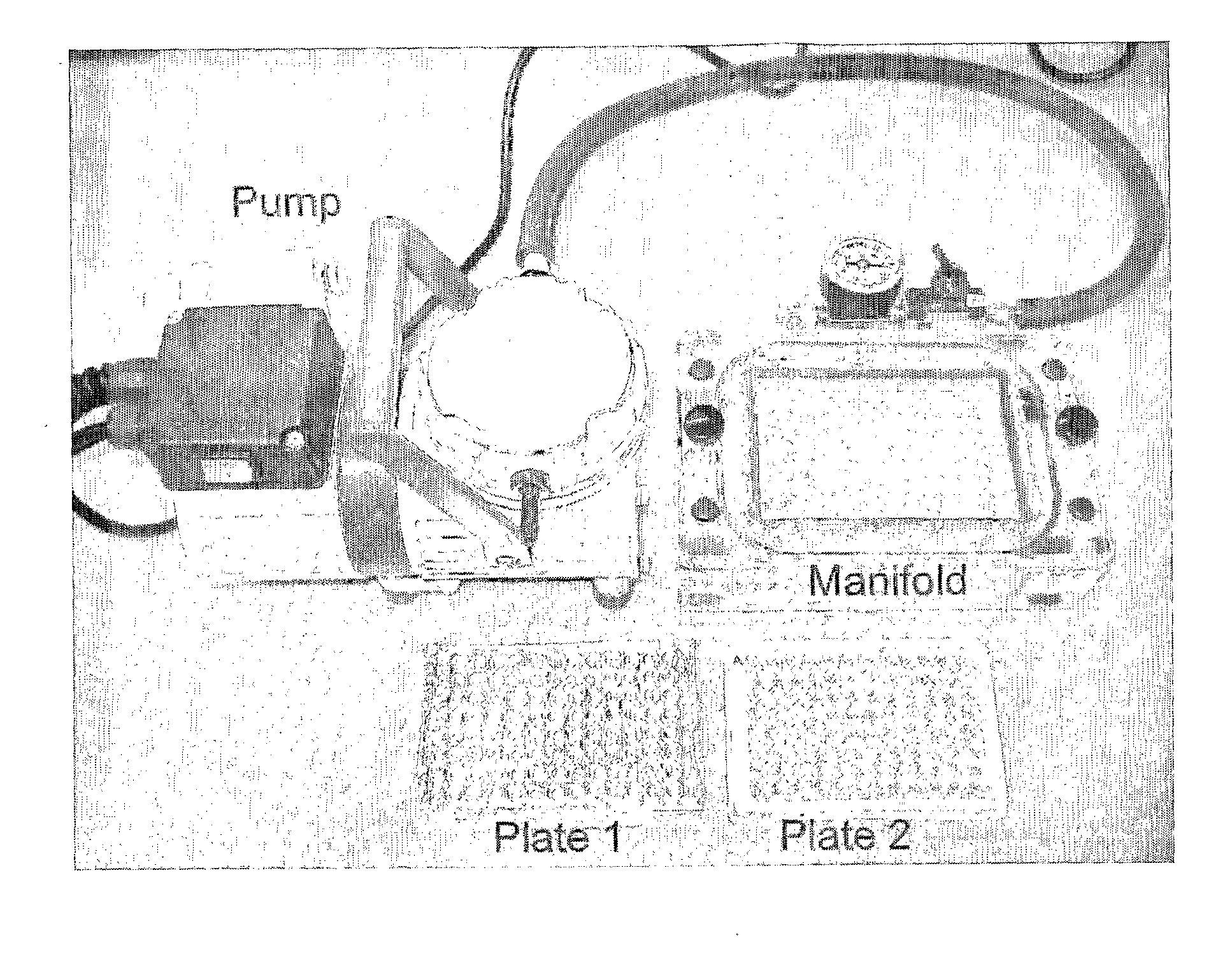Rapid Detection of Cholinesterase Inhibitors
a technology of cholinesterase inhibitor and kit, which is applied in the field of rapid detection of cholinesterase inhibitor kits, can solve the problems of inability to obtain a sensitive, simple, economical kit or method for rapid detection of cholinesterase inhibitors without resorting to cumbersome steps for the improvement of shelf life, excessive salivation and eye watering, and muscle spasms
- Summary
- Abstract
- Description
- Claims
- Application Information
AI Technical Summary
Benefits of technology
Problems solved by technology
Method used
Image
Examples
Embodiment Construction
[0056]A first aspect of the invention provides a method of detecting the presence of an amount of cholinesterase inhibitor in a sample comprising the steps of: (a) contacting the sample with an agent capable of recovering any cholinesterase inhibitor in the sample; (b) contacting any reactivated cholinesterase inhibitor from step (a) with a cholinesterase wherein the cholinesterase activity is known; and (c) measurement of the cholinesterase activity to determine the inhibition of cholinesterase activity from the known activity.
[0057]A sample may be a biological sample such as a blood, plasma, urine or other body fluid of an individual that may have been exposed to a cholinesterase inhibitor. The volume of the sample could be in the range 1 to 100 μl or more preferably in the range of 15 to 50 μl or 20 to 25 μl or most preferably 20 μl. The sample could be taken from a simple blood test such as a finger prick with a lancet wherein the blood is then removed from the puncture site in ...
PUM
 Login to View More
Login to View More Abstract
Description
Claims
Application Information
 Login to View More
Login to View More - R&D
- Intellectual Property
- Life Sciences
- Materials
- Tech Scout
- Unparalleled Data Quality
- Higher Quality Content
- 60% Fewer Hallucinations
Browse by: Latest US Patents, China's latest patents, Technical Efficacy Thesaurus, Application Domain, Technology Topic, Popular Technical Reports.
© 2025 PatSnap. All rights reserved.Legal|Privacy policy|Modern Slavery Act Transparency Statement|Sitemap|About US| Contact US: help@patsnap.com



